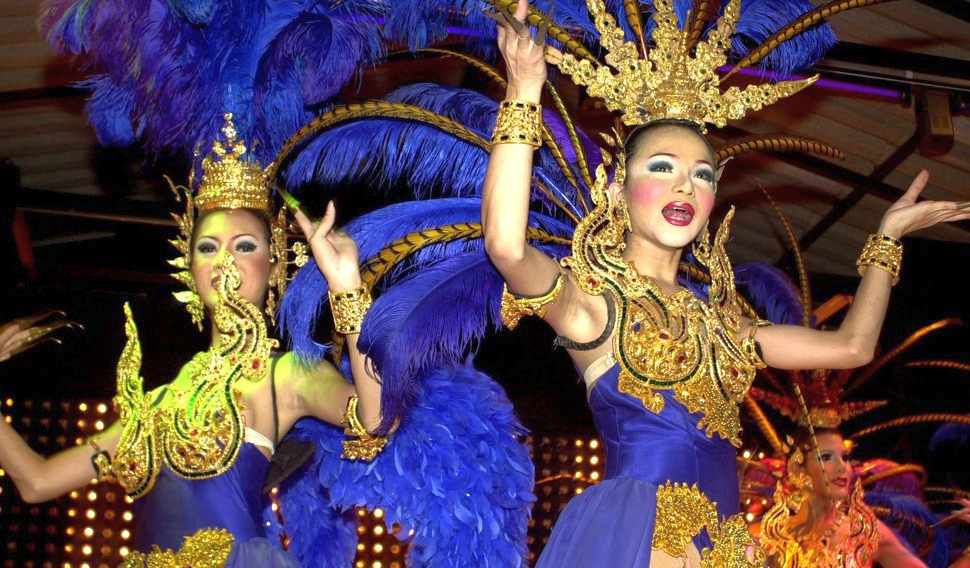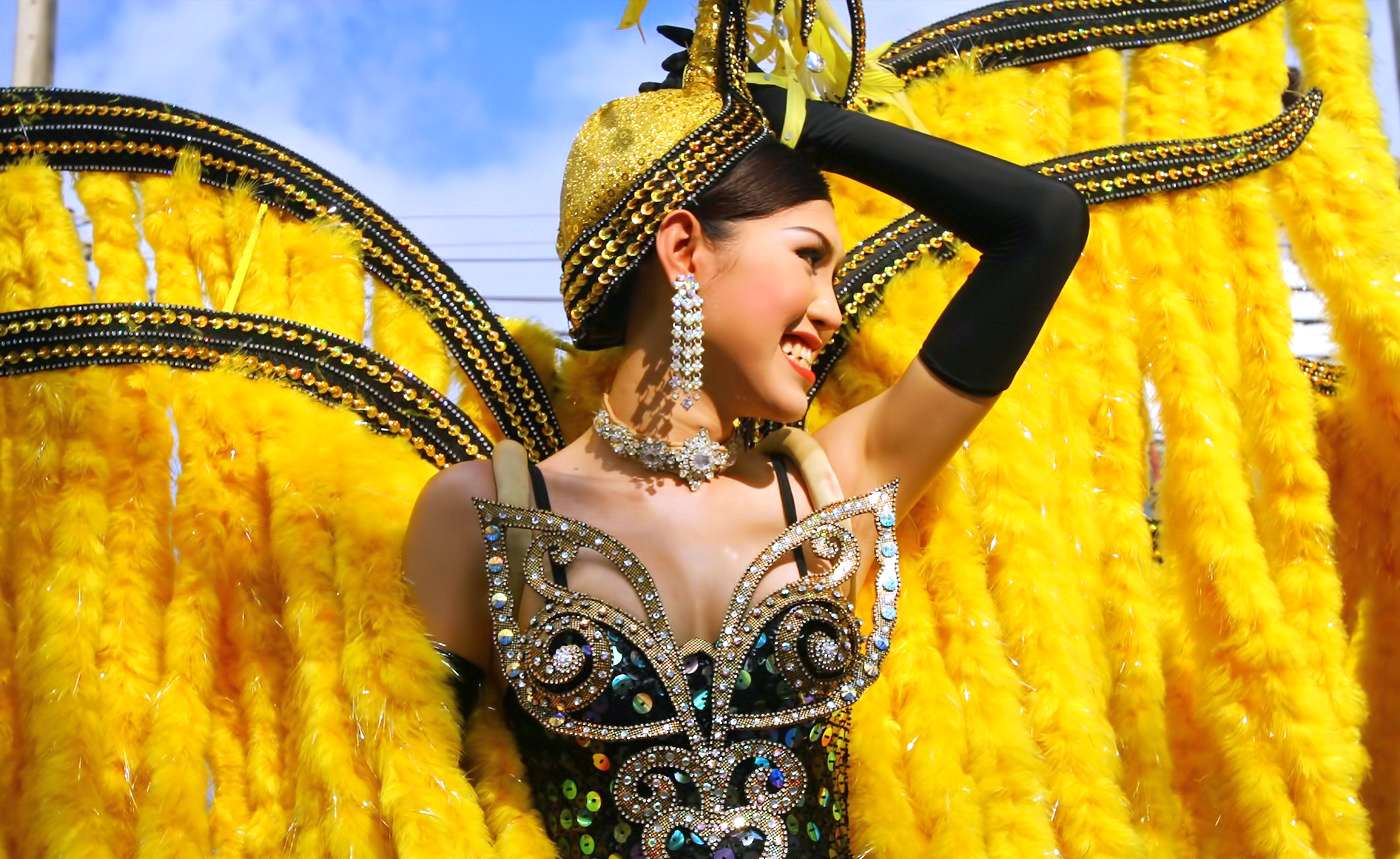Originally posted 2018-08-03 05:00:40.
I have taken the liberty of republishing in full the pages of the American Psychiatric Association’s Diagnostic and Statistical Manual, Fifth Edition (APA DSM-V) which are relevant to Gender Dysphoria.
If the APA objects, I’ll take it down, but I publish this in good faith, without alteration or comment, as a public information service. I will write another post commenting. I’ll also put a link to this and to the DSM itself (which is downloadable in full as a .pdf) on my Links page.
I strongly advise anyone interested in the field of transsexualism, transvestism, gender dysphoria and related topics to thoroughly study the document below.
Note: The APA now has a programme of rolling revision to its online materials, so the specific wordings may change. This was the state as downloaded in February 2018. As a result, this is only a guide and in all cases of clinical interaction, the current version on the APA website (see link below) should be referred to.
Gender Dysphoria
In this chapter, there is one overarching diagnosis of gender dysphoria, with separate developmentally appropriate criteria sets for children and for adolescents and adults. The area of sex and gender is highly controversial and has led to a proliferation of terms whose meanings vary over time and within and between disciplines. An additional source of confusion is that in English “sex” connotes both male/female and sexuality.
This chapter employs constructs and terms as they are widely used by clinicians from various disciplines with specialization in this area. In this chapter, sex and sexual refer to the biological indicators of male and female (understood in the context of reproductive capacity), such as in sex chromosomes, gonads, sex hormones, and nonambiguous internal and external genitalia. Disorders of sex development denote conditions of inborn somatic deviations of the reproductive tract from the norm and/or discrepancies among the biological indicators of male and female. Cross-sex hormone treatment denotes the use of feminizing hormones in an individual assigned male at birth based on traditional biological indicators or the use of masculinizing hormones in an individual assigned female at birth.
The need to introduce the term gender arose with the realization that for individuals with conflicting or ambiguous biological indicators of sex (i.e., “intersex”), the lived role in society and/or the identification as male or female could not be uniformly associated with or predicted from the biological indicators and, later, that some individuals develop an identity as female or male at variance with their uniform set of classical biological indicators. Thus, gender is used to denote the public (and usually legally recognized) lived role as boy or girl, man or woman, but, in contrast to certain social constructionist theories, biological factors are seen as contributing, in interaction with social and psychological factors, to gender development.

Gender assignment refers to the initial assignment as male or female. This occurs usually at birth and, thereby, yields the “natal gender.” Gender-atypical refers to somatic features or behaviors that are not typical (in a statistical sense) of individuals with the same assigned gender in a given society and historical era; for behavior, gender-non-conforming is an alternative descriptive term. Gender reassignment denotes an official (and usually legal) change of gender. Gender identity is a category of social identity and refers to an individual’s identification as male, female, or, occasionally, some category other than male or female.
Gender dysphoria as a general descriptive term refers to an individual’s affective/cognitive discontent with the assigned gender but is more specifically defined when used as a diagnostic category. Transgender refers to the broad spectrum of individuals who transiently or persistently identify with a gender different from their natal gender. Transsexual denotes an individual who seeks, or has undergone, a social transition from male to female or female to male, which in many, but not all, cases also involves a somatic transition by cross-sex hormone treatment and genital surgery (sex reassignment surgery). (Note: I do not agree with this definition. Only homosexual transsexuals or HSTS in the Blanchard taxonomy are transsexual. RF). Gender dysphoria refers to the distress that may accompany the incongruence between one’s experienced or expressed gender and one’s assigned gender. Although not all individuals will experience distress as a result of such incongruence, many are distressed if the desired physical interventions by means of hormones and/or surgery are not available. The current term is more descriptive than the previous DSM-IV term gender identity disorder and focuses on dysphoria as the clinical problem, not identity per se.
(Again, I am dubious about this change and the motives behind it. That is because it appears to enable a more formulaic approach, involving surgery etc, that does not address the underlying cause. It’s like sticking a plaster on a patient and ignoring the fact that he’s a haemophiliac. I’m not convinced even HSTS really need surgery anyway, except in a few cases and I am certain that the best approach to dealing with Autogynephilia is psychotherapy, not surgery. This involves addressing the cause of the issue, rather than just fixing the symptoms; the cause of the dysphoria, either type, is always an issue with gender. QED. RF.)

Gender Dysphoria
________________________________________
Diagnostic Criteria
________________________________________
Gender Dysphoria in Children
________________________________________
302.6 (F64.2)
A. A marked incongruence between one’s experienced/expressed gender and assigned gender, of at least 6 months’ duration, as manifested by at least six of the following (one of which must be Criterion A1):
1. A strong desire to be of the other gender or an insistence that one is the other gender (or some alternative gender different from one’s assigned gender).
2. In boys (assigned gender), a strong preference for cross-dressing or simulating female attire: or in girls (assigned gender), a strong preference for wearing only typical masculine clothing and a strong resistance to the wearing of typical feminine clothing.
3. A strong preference for cross-gender roles in make-believe play or fantasy play.
4. A strong preference for the toys, games, or activities stereotypically used or engaged in by the other gender.
5. A strong preference for playmates of the other gender.
6. In boys (assigned gender), a strong rejection of typically masculine toys, games, and activities and a strong avoidance of rough-and-tumble play; or in girls (assigned gender), a strong rejection of typically feminine toys, games, and activities.
7. A strong dislike of one’s sexual anatomy.
8. A strong desire for the primary and/or secondary sex characteristics that match one’s experienced gender.
B. The condition is associated with clinically significant distress or impairment in social, school, or other important areas of functioning.
Specify if: With a disorder of sex development (e.g., a congenital adrenogenital disorder such as 255.2 [E25.0] congenital adrenal hyperplasia or 259.50 [E34.50] androgen insensi¬tivity syndrome).
Coding note: Code the disorder of sex development as well as gender dysphoria.
Gender Dysphoria in Adolescents and Adults

________________________________________
302.85 (F64.1 )
A. A marked incongruence between one’s experienced/expressed gender and assigned gender, of at least 6 months’ duration, as manifested by at least two of the following:
1. A marked incongruence between one’s experienced/expressed gender and primary and/or secondary sex characteristics (or in young adolescents, the anticipated secondary sex characteristics).
2. A strong desire to be rid of one’s primary and/or secondary sex characteristics be¬cause of a marked incongruence with one’s experienced/expressed gender (or in young adolescents, a desire to prevent the development of the anticipated secondary sex characteristics).
3. A strong desire for the primary and/or secondary sex characteristics of the other gender.
4. A strong desire to be of the other gender (or some alternative gender different from one’s assigned gender).
5. A strong desire to be treated as the other gender (or some alternative gender different from one’s assigned gender).
6. A strong conviction that one has the typical feelings and reactions of the other gender (or some alternative gender different from one’s assigned gender).
B. The condition is associated with clinically significant distress or impairment in social, occupational or other important areas of functioning.
Specify if: With a disorder of sex development (e.g., a congenital adrenogenital disorder such as 255.2 [E25.0] congenital adrenal hyperplasia or 259.50 [E34.50] androgen insensitivity syndrome).
Coding note: Code the disorder of sex development as well as gender dysphoria.

Specify if:
Posttransition: The individual has transitioned to full-time living in the desired gender (with or without legalization of gender change) and has undergone (or is preparing to have) at least one cross-sex medical procedure or treatment regimen—namely, regular cross-sex hormone treatment or gender reassignment surgery confirming the desired gender (e.g., penectomy, vaginoplasty in a natal male; mastectomy or phalloplasty in a natal female).
Specifiers
The posttransition specifier may be used in the context of continuing treatment procedures that serve to support the new gender assignment.

Diagnostic Features
Individuals with gender dysphoria have a marked incongruence between the gender they have been assigned to (usually at birth, referred to as natal gender) and their experienced/expressed gender. This discrepancy is the core component of the diagnosis. There must also be evidence of distress about this incongruence. Experienced gender may include alternative gender identities beyond binary stereotypes. Consequently, the distress is not limited to a desire to simply be of the other gender, but may include a desire to be of an alternative gender, provided that it differs from the individual’s assigned gender.
Gender dysphoria manifests itself differently in different age groups. Prepubertal natal girls with gender dysphoria may express the wish to be a boy, assert they are a boy, or assert they will grow up to be a man. They prefer boys’ clothing and hairstyles, are often perceived by strangers as boys, and may ask to be called by a boy’s name. Usually, they display intense negative reactions to parental attempts to have them wear dresses or other feminine attire. Some may refuse to attend school or social events where such clothes are required. These girls may demonstrate marked cross-gender identification in role-playing, dreams, and fantasies. Contact sports, rough-and-tumble play, traditional boyhood games, and boys as playmates are most often preferred. They show little interest in stereotypically feminine toys (e.g., dolls) or activities (e.g., feminine dress-up or role-play). Occasionally, they refuse to urinate in a sitting position. Some natal girls may express a desire to have a penis or claim to have a penis or that they will grow one when older. They may also state that they do not want to develop breasts or menstruate.
Prepubertal natal boys with gender dysphoria may express the wish to be a girl or as¬sert they are a girl or that they will grow up to be a woman. They have a preference for dressing in girls’ or women’s clothes or may improvise clothing from available materials (e.g., using towels, aprons, and scarves for long hair or skirts).
These children may role-play female figures (e.g., playing “mother”) and often are intensely interested in female fantasy figures. Traditional feminine activities, stereotypical games, and pastimes (e.g., “playing house”; drawing feminine pictures; watching television or videos of favorite female characters) are most often preferred. Stereotypical female-type dolls (e.g.. Barbie) are often favorite toys, and girls are their preferred playmates. They avoid rough-and-tumble play and competitive sports and have little interest in stereotypically masculine toys (e.g., cars, trucks). Some may pretend not to have a penis and insist on sitting to urinate. More rarely, they may state that they find their penis or testes disgusting, that they wish them removed, or that they have, or wish to have, a vagina.
In young adolescents with gender dysphoria, clinical features may resemble those of children or adults with the condition, depending on developmental level. As secondary sex characteristics of young adolescents are not yet fully developed, these individuals may not state dislike of them, but they are concerned about imminent physical changes.
In adults with gender dysphoria, the discrepancy between experienced gender and physical sex characteristics is often, but not always, accompanied by a desire to be rid of primary and/or secondary sex characteristics and/or a strong desire to acquire some primary and/or secondary sex characteristics of the other gender. To varying degrees, adults with gender dysphoria may adopt the behavior, clothing, and mannerisms of the experienced gender. They feel uncomfortable being regarded by others, or functioning in society, as members of their assigned gender.
Some adults may have a strong desire to be of a different gender and treated as such, and they may have an inner certainty to feel and respond as the experienced gender without seeking medical treatment to alter body characteristics. They may find other ways to resolve the incongruence between experienced/expressed and assigned gender by partially living in the desired role or by adopting a gender role neither conventionally male nor conventionally female.
Associated Features Supporting Diagnosis
When visible signs of puberty develop, natal boys may shave their legs at the first signs of hair growth. They sometimes bind their genitals to make erections less visible. Girls may bind their breasts, walk with a stoop, or use loose sweaters to make breasts less visible. Increasingly, adolescents request, or may obtain without medical prescription and supervision, hormonal suppressors (“blockers”) of gonadal steroids (e.g., gonadotropin-releasing hormone [GnRH] analog, spironolactone).
Clinically referred adolescents often want hormone treatment and many also wish for gender reassignment surgery. Adolescents living in an accepting environment may openly express the desire to be and be treated as the experienced gender and dress partly or completely as the experienced gender, have a hairstyle typical of the experienced gender, preferentially seek friendships with peers of the other gender, and/or adopt a new first name consistent with the experienced gender.
Older adolescents, when sexually active, usually do not show or allow partners to touch their sexual organs. For adults with an aversion toward their genitals, sexual activity is constrained by the preference that their genitals not be seen or touched by their partners. Some adults may seek hormone treatment (sometimes without medical prescription and supervision) and gender reassignment surgery. Others are satisfied with either hormone treatment or surgery alone.
Adolescents and adults with gender dysphoria before gender reassignment are at increased risk for suicidal ideation, suicide attempts, and suicides. After gender reassignment, adjustment may vary, and suicide risk may persist.
Prevalence
For natal adult males, prevalence ranges from 0.005% to 0.014%, and for natal females, from 0.002% to 0.003%. Since not all adults seeking hormone treatment and surgical reassignment attend specialty clinics, these rates are likely modest underestimates. Sex differences in rate of referrals to specialty clinics vary by age group. In children, sex ratios of natal boys to girls range from 2:1 to 4.5:1. In adolescents, the sex ratio is close to parity; in adults, the sex ratio favors natal males, with ratios ranging from 1:1 to 6.1:1. In two coun¬tries, the sex ratio appears to favor natal females (Japan: 2.2:1; Poland: 3.4:1).
Development and Course
Because expression of gender dysphoria varies with age, there are separate criteria sets for children versus adolescents and adults. Criteria for children are defined in a more concrete, behavioral manner than those for adolescents and adults. Many of the core criteria draw on well-documented behavioral gender differences between typically developing boys and girls.
Young children are less likely than older children, adolescents, and adults to express extreme and persistent anatomic dysphoria. In adolescents and adults, incongruence between experienced gender and somatic sex is a central feature of the diagnosis. Factors related to distress and impairment also vary with age. A very young child may show signs of distress (e.g., intense crying) only when parents tell the child that he or she is “really” not a member of the other gender but only “desires” to be. Distress may not be manifest in social environments supportive of the child’s desire to live in the role of the other gender and may emerge only if the desire is interfered with.
In adolescents and adults, distress may manifest because of strong incongruence between experienced gender and somatic sex. Such distress may, however, be mitigated by supportive environments and knowledge that biomedical treatments exist to reduce incongruence. Impairment (e.g., school refusal, development of depression, anxiety, and substance abuse) may be a consequence of gender dysphoria.
Gender dysphoria without a disorder of sex development.
For clinic-referred children, onset of cross-gender behaviors is usually between ages 2 and 4 years. This corresponds to the developmental time period in which most typically developing children begin expressing gendered behaviors and interests.
For some preschool-age children, both pervasive cross-gender behaviors and the expressed desire to be the other gender may be present, or, more rarely, labeling oneself as a member of the other gender may occur. In some cases, the expressed desire to be the other gender appears later, usually at entry into elementary school. A small minority of children express discomfort with their sexual anatomy or will state the desire to have a sexual anatomy corresponding to the experienced gender (“anatomic dysphoria”). Expressions of anatomic dysphoria become more common as children with gender dysphoria approach and anticipate puberty.
Persistence
Rates of persistence of gender dysphoria from childhood into adolescence or adulthood vary. In natal males, persistence has ranged from 2.2% to 30%. In natal females, persistence has ranged from 12% to 50%. Persistence of gender dysphoria is modestly correlated with dimensional measures of severity ascertained at the time of a childhood baseline assessment. In one sample of natal males, lower socioeconomic background was also modestly correlated with persistence. It is unclear if particular therapeutic approaches to gender dysphoria in children are related to rates of long-term persistence.
Extant follow-up samples consisted of children receiving no formal therapeutic intervention or receiving therapeutic interventions of various types, ranging from active efforts to reduce gender dysphoria to a more neutral, “watchful waiting” approach. It is unclear if children “encouraged” or supported to live socially in the desired gender will show higher rates of persistence, since such children have not yet been followed longitudinally in a systematic manner.
(This is the source of much of my concern. Decisions are being made on the basis of little or no evidence, usually in a manner that favours refusal of appropriate treatment, especially in younger individuals. RF)
For both natal male and female children showing persistence, almost all are sexually attracted to individuals of their natal sex. For natal male children whose gender dysphoria does not persist, the majority are androphilic (sexually attracted to males) and often self-identify as gay or homosexual (ranging from 63% to 100%). In natal female children whose gender dysphoria does not persist, the percentage who are gynephilic (sexually attracted to females) and self-identify as lesbian is lower (ranging from 32% to 50%).
In both adolescent and adult natal males, there are two broad trajectories for development of gender dysphoria: early onset and late onset. Early-onset gender dysphoria starts in childhood and continues into adolescence and adulthood; or, there is an intermittent period in which the gender dysphoria desists and these individuals self-identify as gay or homosexual, followed by recurrence of gender dysphoria. Late-onset gender dysphoria occurs around puberty or much later in life.
(In other words, those with Early-onset are equivalent to homosexual transsexuals, Blanchard HSTS and Late-onset to nonhomosexual transitioners, Blanchard Autogynephiles. See also below. RF)
Some of these individuals report having had a desire to be of the other gender in childhood that was not expressed verbally to others. Others do not recall any signs of childhood gender dysphoria. For adolescent males with late-onset gender dysphoria, parents often report surprise because they did not see signs of gender dysphoria during childhood. Expressions of anatomic dysphoria are more common and salient in adolescents and adults once secondary sex characteristics have developed.
Adolescent and adult natal males with early-onset gender dysphoria are almost always sexually attracted to men (androphilic). Adolescents and adults with late-onset gender dysphoria frequently engage in transvestic behavior with sexual excitement. The majority of these individuals are gynephilic or sexually attracted to other post-transition natal males with late-onset gender dysphoria.
A substantial percentage of adult males with late-onset gender dysphoria cohabit with or are married to natal females. After gender transition, many self-identify as lesbian. Among adult natal males with gender dysphoria, the early-onset group seeks out clinical care for hormone treatment and reassignment surgery at an earlier age than does the late-onset group. The late-onset group may have more fluctuations in the degree of gender dysphoria and be more ambivalent about and less likely satisfied after gender reassignment surgery.
In both adolescent and adult natal females, the most common course is the early-onset form of gender dysphoria. The late-onset form is much less common in natal females com¬pared with natal males. As in natal males with gender dysphoria, there may have been a period in which the gender dysphoria desisted and these individuals self-identified as lesbian; however, with recurrence of gender dysphoria, clinical consultation is sought, often with the desire for hormone treatment and reassignment surgery. Parents of natal adolescent females with the late-onset form also report surprise, as no signs of childhood gender dysphoria were evident. Expressions of anatomic dysphoria are much more common and salient in adolescents and adults than in children.
Adolescent and adult natal females with early-onset gender dysphoria are almost always gynephilic. Adolescents and adults with the late-onset form of gender dysphoria are usually androphilic and after gender transition self-identify as gay men. Natal females with the late-onset form do not have co-occurring transvestic behavior with sexual excitement.

Gender dysphoria in association with a disorder of sex development.
Most individuals with a disorder of sex development who develop gender dysphoria have already come to medical attention at an early age. For many, starting at birth, issues of gender assignment were raised by physicians and parents. Moreover, as infertility is quite common for this group, physicians are more willing to perform cross-sex hormone treatments and genital surgery before adulthood.
Disorders of sex development in general are frequently associated with gender-atypical behavior starting in early childhood. However, in the majority of cases, this does not lead to gender dysphoria. As individuals with a disorder of sex development become aware of their medical history and condition, many experience uncertainty about their gender, as opposed to developing a firm conviction that they are another gender. How¬ever, most do not progress to gender transition. Gender dysphoria and gender transition may vary considerably as a function of a disorder of sex development, its severity, and assigned gender.
Risk and Prognostic Factors
Temperamental. For individuals with gender dysphoria without a disorder of sex development, atypical gender behavior among individuals with early-onset gender dysphoria develops in early preschool age, and it is possible that a high degree of atypicality makes the development of gender dysphoria and its persistence into adolescence and adulthood more likely.
Environmental.
Among individuals with gender dysphoria without a disorder of sex development, males with gender dysphoria (in both childhood and adolescence) more commonly have older brothers than do males without the condition. Additional predisposing factors under consideration, especially in individuals with late-onset gender dysphoria (adolescence, adulthood), include habitual fetishistic transvestism developing into autogynephilia (i.e., sexual arousal associated with the thought or image of oneself as a woman) and other forms of more general social, psychological, or developmental problems.
Genetic and physiological.
For individuals with gender dysphoria without a disorder of sex development, some genetic contribution is suggested by evidence for (weak) familiality of transsexualism among nontwin siblings, increased concordance for transsexualism in monozygotic compared with dizygotic same-sex twins, and some degree of heritability of gender dysphoria. As to endocrine findings, no endogenous systemic abnormalities in sex-hormone levels have been found in 46,XY individuals, whereas there appear to be in¬creased androgen levels (in the range found in hirsute women but far below normal male levels) in 46,XX individuals. Overall, current evidence is insufficient to label gender dysphoria without a disorder of sex development as a form of intersexuality limited to the cen¬tral nervous system.
In gender dysphoria associated with a disorder of sex development, the likelihood of later gender dysphoria is increased if prenatal production and utilization (via receptor sensitivity) of androgens are grossly atypical relative to what is usually seen in individuals with the same assigned gender. Examples include 46,XY individuals with a history of normal male prenatal hormone milieu but inborn nonhormonal genital defects (as in cloacal bladder exstrophy or penile agenesis) and who have been assigned to the female gender. The likelihood of gender dysphoria is further enhanced by additional, prolonged, highly gender-atypical postnatal androgen exposure with somatic virilization as may occur in female-raised and noncastrated 46,XY individuals with 5-alpha reductase-2 deficiency or 17-beta-hydroxysteroid dehydrogenase-3 deficiency or in female-raised 46,XX individuals with classical congenital adrenal hyperplasia with prolonged periods of non-adherence to glucocorticoid replacement therapy.
However, the prenatal androgen milieu is more closely related to gendered behavior than to gender identity. Many individuals with disorders of sex development and markedly gender-atypical behavior do not develop gender dysphoria. (Note: the authors avoid discussing the effects of social and peer pressure here. RF) Thus, gender-atypical behavior by itself should not be intepreted as an indicator of current or future gender dysphoria. There appears to be a higher rate of gender dysphoria and patient-initiated gender change from assigned female to male than from assigned male to female in 46, XY individuals with a disorder of sex development.
Culture-Related Diagnostic issues
Individuals with gender dysphoria have been reported across many countries and cultures. The equivalent of gender dysphoria has also been reported in individuals living in cultures with institutionalized gender categories other than male or female. It is unclear whether with these individuals the diagnostic criteria for gender dysphoria would be met.
Diagnostic Markers
Individuals with a somatic disorder of sex development show some correlation of final gender identity outcome with the degree of prenatal androgen production and utilization. However, the correlation is not robust enough for the biological factor, where ascertainable, to replace a detailed and comprehensive diagnostic interview evaluation for gender dysphoria.
Functional Consequences of Gender Dysphoria
Preoccupation with cross-gender wishes may develop at all ages after the first 2-3 years of childhood and often interfere with daily activities. In older children, failure to develop age-typical same-sex peer relationships and skills may lead to isolation from peer groups and to distress. Some children may refuse to attend school because of teasing and harassment or pressure to dress in attire associated with their assigned sex. Also in adolescents and adults, preoccupation with cross-gender wishes often interferes with daily activities. Relationship difficulties, including sexual relationship problems, are common, and functioning at school or at work may be impaired.
Gender dysphoria, along with atypical gender expression, is associated with high levels of stigmatization, discrimination, and victimization, leading to negative self-concept, increased rates of mental disorder comorbidity, school dropout, and economic marginalization, including unemployment, with attendant social and mental health risks, especially in individuals from resource-poor family backgrounds. In addition, these individuals’ access to health services and mental health services may be impeded by structural barriers, such as institutional discomfort or inexperience in working with this patient population.
Differential Diagnosis
Nonconformity to gender roles.
Gender dysphoria should be distinguished from simple nonconformity to stereotypical gender role behavior by the strong desire to be of another gender than the assigned one and by the extent and pervasiveness of gender-variant activities and interests. The diagnosis is not meant to merely describe nonconformity to stereotypical gender role behavior (e.g., “tomboyism” in girls, “girly-boy” behavior in boys, occasional cross-dressing in adult men). Given the increased openness of atypical gender expressions by individuals across the entire range of the transgender spectrum, it is important that the clinical diagnosis be limited to those individuals whose distress and impairment meet the specified criteria.
Transvestic disorder.
Transvestic disorder occurs in heterosexual (or bisexual) adolescent and adult males (rarely in females) for whom cross-dressing behavior generates sexual excitement and causes distress and/or impairment without drawing their primary gender into question. It is occasionally accompanied by gender dysphoria. An individual with transvestic disorder who also has clinically significant gender dysphoria can be given both diagnoses. In many cases of late-onset gender dysphoria in gynephilic natal males, transvestic behavior with sexual excitement is a precursor.
Body dysmorphic disorder.
An individual with body dysmorphic disorder focuses on the alteration or removal of a specific body part because it is perceived as abnormally formed, not because it represents a repudiated assigned gender. When an individual’s presentation meets criteria for both gender dysphoria and body dysmorphic disorder, both diagnoses can be given. Individuals wishing to have a healthy limb amputated (termed by some body integrity identity disorder) because it makes them feel more “complete” usually do not wish to change gender, but rather desire to live as an amputee or a disabled person.
Schizophrenia and other psychotic disorders.
In schizophrenia, there may rarely be delusions of belonging to some other gender. In the absence of psychotic symptoms, insistence by an individual with gender dysphoria that he or she is of some other gender is not considered a delusion. Schizophrenia (or other psychotic disorders) and gender dysphoria may co-occur.
Other clinical presentations.
Some individuals with an emasculinization desire who develop an alternative, nonmale/nonfemale gender identity do have a presentation that meets criteria for gender dysphoria. However, some males seek castration and/or penectomy for aesthetic reasons or to remove psychological effects of androgens without changing male identity; in these cases, the criteria for gender dysphoria are not met.
Comorbidity
Clinically referred children with gender dysphoria show elevated levels of emotional and behavioral problems—most commonly, anxiety, disruptive and impulse-control, and depressive disorders. In prepubertal children, increasing age is associated with having more behavioral or emotional problems; this is related to the increasing non-acceptance of gender-variant behavior by others.
In older children, gender-variant behavior often leads to peer ostracism, which may lead to more behavioral problems. The prevalence of mental health problems differs among cultures; these differences may also be related to differences in attitudes toward gender variance in children. However, also in some non-Westem cultures, anxiety has been found to be relatively common in individuals with gender dysphoria, even in cultures with accepting attitudes toward gender-variant behavior.
Autism spectrum disorder is more prevalent in clinically referred children with gender dysphoria than in the general population. Clinically referred adolescents with gender dysphoria appear to have comorbid mental disorders, with anxiety and depressive disorders being the most common. As in children, autism spectrum disorder is more prevalent in clinically referred adolescents with gender dysphoria than in the general population. Clinically referred adults with gender dysphoria may have coexisting mental health problems, most commonly anxiety and depressive disorders.
Other Specified Gender Dysphoria
________________________________________
302.6 (F64.8)
________________________________________
This category applies to presentations in which symptoms characteristic of gender dysphoria that cause clinically significant distress or impairment in social, occupational, or other important areas of functioning predominate but do not meet the full criteria for gender dysphoria. The other specified gender dysphoria category is used in situations in which the clinician chooses to communicate the specific reason that the presentation does not meet the criteria for gender dysphoria. This is done by recording “other specified gender dys¬phoria” followed by the specific reason (e.g., “brief gender dysphoria”). An example of a presentation that can be specified using the “other specified” designation is the following: The current disturbance meets symptom criteria for gender dysphoria, but the duration is less than 6 months.
Unspecified Gender Dysphoria
________________________________________
302.6 (F64.9)
________________________________________
This category applies to presentations in which symptoms characteristic of gender dysphoria that cause clinically significant distress or impairment in social, occupational, or other important areas of functioning predominate but do not meet the full criteria for gender dysphoria. The unspecified gender dysphoria category is used in situations in which the clinician chooses not to specify the reason that the criteria are not met for gender dysphoria, and includes presentations in which there is insufficient information to make a more specific diagnosis.




Interesting post! For what it’s worth, there’s also a separate category of gender dysphoria called male-to-eunuch gender dysphoria. I think that it’s gotten official recognition over the last several years, thankfully!
Personally, I liked my body before puberty but not so much after puberty. (I also developed transvestic fetishistic inclinations at age nine or ten, right when puberty hit.) The body hair, facial hair, baldness, masculinization of my facial features–I wasn’t very fond of any of that! 🙁 Still aren’t! 🙁 The only good things about male puberty are the increased height and the erections and sex drive. At the same time, though, I don’t think that I would have been fully happy being born in a female body either. I wouldn’t have wanted breasts, and I would have disliked being too short, having overly wide hips, and having a face that was too feminine. Frankly, the term “man” makes me feel dysphoric (though I don’t mind and even enjoy male pronouns) but at the same time I don’t identify as female, so …
Yes. Smoothies and Nullos
What I find ESPECIALLY interesting is that some smoothies want to also remove their nipples! Seriously. That’s what I’ve heard!
BTW, some eunuchs actually do want to keep their penises. A desire for penectomy isn’t actually universal among eunuchs to my knowledge.
If I was a woman, I’d totally identify as a lesbian (though with a soft spot for some androgynous males, such as YouTuber Juliette Noir). At the same time, though, the kind of lesbian that I would have wanted to have been would have been a lesbian with both a flat chest and a penis–as well as with an androgynous face.
By the way, you do occasionally see passable AGPs. Juliette Noir, for instance, and also F1NN5TER (“Rose” when in girl mode) on YouTube.
Oh yes that’s true. If they start HRT soon after puberty when the condition starts they can be very passable.